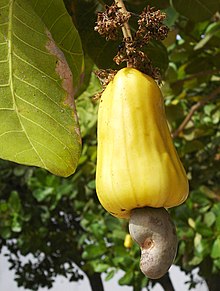
| Part of a series on |
| Alternative medicine |
|---|
 |
Traditional Brazilian medicine (Portuguese: Medicina indígena) includes many native South American elements, and imported African ones. It is predominantly used in areas where indigenous groups and African descendants reside, like in the northeast coast, nearly all interior regions including Amazon regions, savannahs, rainforest, foothills, and Pantanal. According to Romulo R. N. Alves, "although Brazil's health system is public...use of traditional remedies and rituals provide an economical way of healing for much of the populace, but that also does not mean that wealthy Brazilians don't seek it out as well. Traditional medicine is a deep part of Brazilian heritage."[1]
The Aruak, Tupi, Yamomami, Krahô, Guarani and other Indians groups are among the native tribes that together with isolated descendants of Africans or Quilombola, and Indians integrated (Caboclo) that are known to almost exclusively practice traditional medicine. Among the plants include edible foods like the cashew, peppers, mangosteen and coconut, but often include inedible parts like the fruits, leaves, husk, bark. Neighboring nations like the Patamona of Guyana also use the cashew.[citation needed]
There is growing interest in Brazilian medicine as the Amazon rainforest is the largest tropical forest in the world, and is home to immense biodiversity, including cures or treatments for many ailments. Japanese scientists have found strong anticancer activity in Brazilian traditional remedies.[2] In one study in 1997 published in The American Journal of Chinese Medicine, only 122 species existing in Brazil could be related to the Chinese species (or 14.35% of the samples),[3] which means the vast majority of species are not known to Chinese traditional medicine. Thousands and possibly millions of species remain unstudied and/or susceptible to extinction by habitat destruction.
- ^ Mazzari, Andrea L. D. A.; Prieto, Jose M. (2014). "Herbal medicines in Brazil: Pharmacokinetic profile and potential herb-drug interactions". Frontiers in Pharmacology. 5: 162. doi:10.3389/fphar.2014.00162. PMC 4087670. PMID 25071580.
- ^ Harukuni, Tokuda; Akira, Iida (2006). "Basic and applied studies for physiological activities of Brazilian traditional medicine, Taheebo". Yakugaku Zasshi: Journal of the Pharmaceutical Society of Japan (in Japanese). 216 (3). Japan Science and Technology Agency: 136–137. ISSN 0031-6903. Archived from the original on February 10, 2012. Retrieved 17 October 2018.
- ^ "Comparison between ethnopharmacology in traditional Chinese medicine and Brazilian popular phytotherapy". CAT.INIST. Archived from the original on 2012-06-06. Retrieved 17 October 2018.
